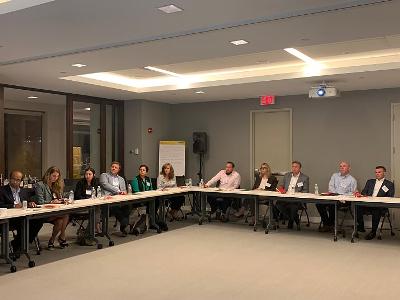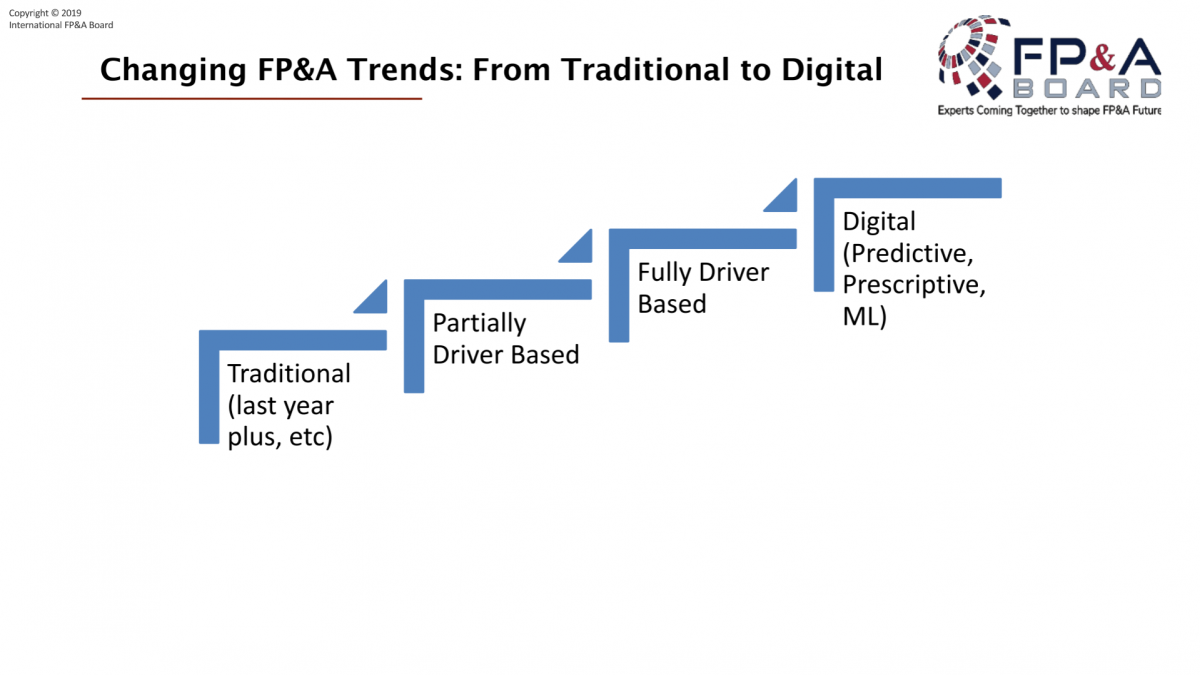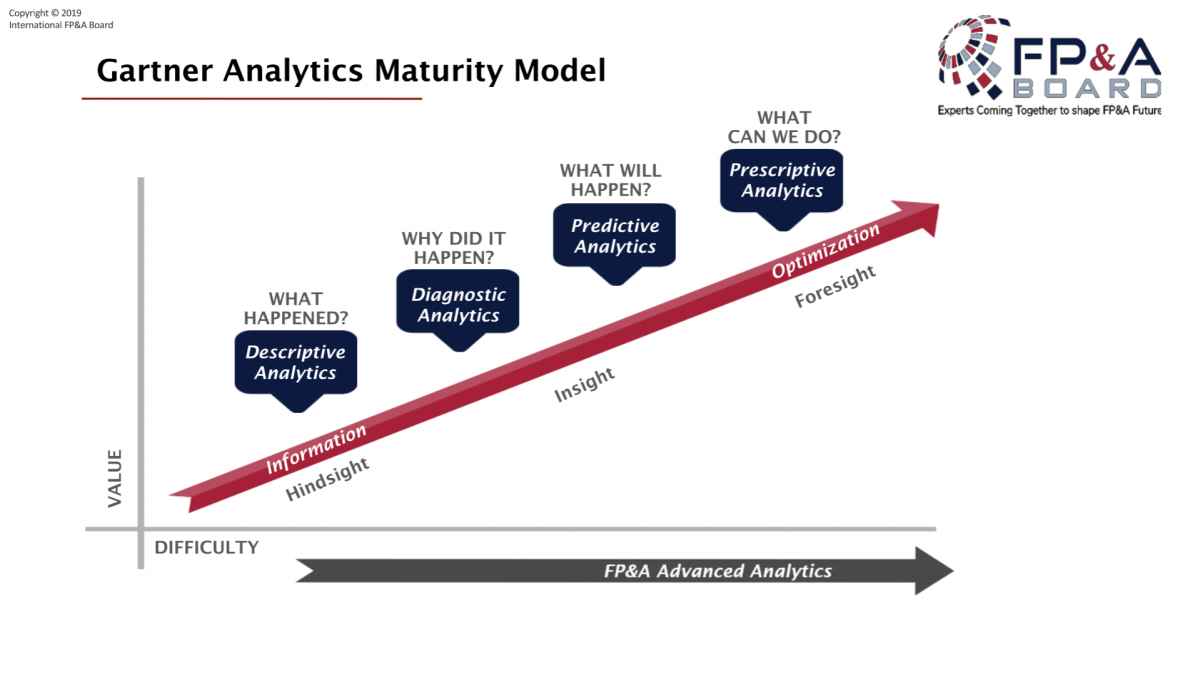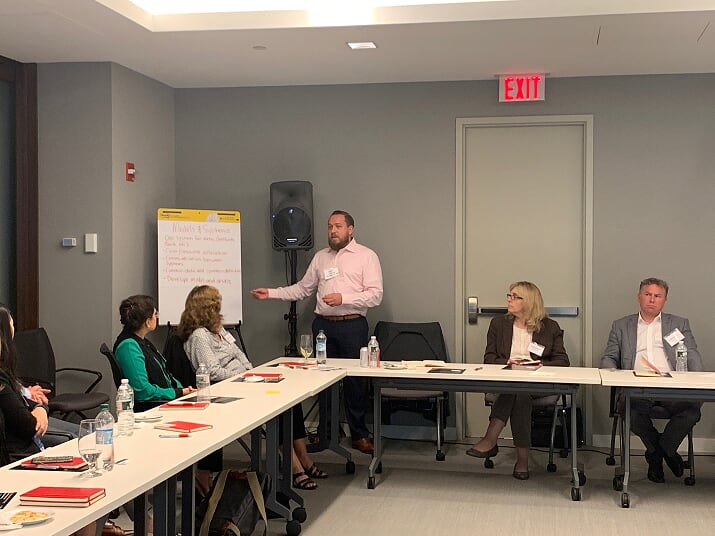 The fifth meeting of the Boston FP&A Board was held on the 17th of September 2019. The meeting was held at the offices of Robert Half and was sponsored by Robert Half and SAP. The purpose of the meeting was to address Driver Based and Predictive FP&A.
The fifth meeting of the Boston FP&A Board was held on the 17th of September 2019. The meeting was held at the offices of Robert Half and was sponsored by Robert Half and SAP. The purpose of the meeting was to address Driver Based and Predictive FP&A.
Highlights
Current FP&A Process
The first issue addressed during the meeting was the current FP&A process in the attendees’ companies. Terms like “challenging,” “fragmented,” and “evolving” were used by the attendees to describe the processes in their companies. In addition to the previously mentioned terms attendees were given an opportunity to label the status of driver based FP&A in their companies by using one of the following three categories:
- Fully driver based
- Partially driver based
- Static, i.e. no drivers
Here are the answers from the attendees based on the above-listed categories:
- 3 people stated their companies’ current FP&A process is fully driver based.
- 18 people stated their companies’ current FP&A process is partially driver based.
- 1 people stated their companies’ current FP&A process is static.
Biggest FP&A Challenges
The second issue addressed during the meeting was the biggest FP&A challenges. This issue was presented by Larysa Melnychuk. Larysa, through her work in this area, provided the following challenges to the attendees:
- How to use growing internal and external data for FP&A?
- How to identify key business drivers?
- How to discover FP&A patterns with predictive analytics?
- How to use AI/ML for FP&A?
Another question added by an attendee to the challenges of FP&A was…how can we ensure data quality before moving to AI/ML?
From Traditional to Digital
The third issue addressed during the meeting was movement from traditional to digital FP&A.
One of the takeaways from this meeting was the use of visuals. Visuals served as a basis for providing additional insights into the meeting’s topic. Here is one of the visuals used during the meeting which illustrated the movement from traditional FP&A to digital FP&A:

Gartner Analytics Maturity Model
The fourth issue addressed during the meeting was the description of various analytics approaches. Like the movement from traditional to digital analytics, this issue was described visually. Here is the visual used to illustrate the various approaches to analytics:

Driver Based Planning
The fifth issue addressed during the meeting was driver based planning. At its highest level driver based planning was described by the input/driver/output concept. Below this level driver based planning was described as “the basis for scenario planning, predictive analytics, rolling forecast, integrated planning, and improved corporate vision.”
After definitions a question was asked about why driver based planning matters for modern FP&A and the following answers were given:
- Alignment
- Accountability
- Speed
- Simplicity
- Forward-Looking
- Scenarios
- Quality
- Collaboration
- Drives Business Outcomes
- Flexibility
- Resource Utilization
- Better Variance Analysis
- Less Biased
Also addressed during this portion of the meeting was the following:
- Find 20% of the drivers that can explain 80% of the results, i.e. the Pareto Principle
- Emphasis on data accumulation
- Executive buy-in
- Data drivers began internally but moved to a mix of internal and external data
- Revenue forecast being driver based
- Top/down and bottom/up scenarios
What is Predictive Analytics?
The sixth issue addressed during the meeting was predictive analytics.
Predictive analytics was described as being similar to a driver based model as long as one could get the drivers right. Predictive analytics also was described as a process of extracting value from data to determine patterns and predict future outcomes as well as trends. In addition, predictive analytics was described as a set of statistical tools designed to find deep patterns in the behavior of the targeted outcomes, an opportunity to utilize big data.
Predictive analytics was contrasted from driver based in that driver based is a high-level approach while predictive analytics works on the ground, e.g. by product, customer, company.
A case study was presented on the use of predictive analytics and here are the key takeaways from this study:
- Process time decreased and forecast accuracy increased
- Benefits include improved insights, more collaboration, and more fact-based decisions.

FP&A Paradigm Shift
The seventh issue addressed during the meeting was consideration of the following statement:
“A movement in FP&A exists from traditional to digital, i.e. AI and ML.”
Group Work
The eighth part of the meeting was group work. Three groups were setup in order to discuss driver based and predictive FP&A. The discussions were centered on the following topics:
- Culture
- Models & Systems
- Processes
Comments about Culture
- Taking biases out
- Trust in data
- Existing ecosystem setup
- Change is not easy
- Pace of change
- Degree of integration
- Whose data is best?
- Fatalism, is it out of our control?
- Human expectation of management
- Will predictive analytics be the baseline?
- Everybody has to agree on the outcome
- Corporate transparency
- Selection of drivers
Comments about Models & Systems
- One system of data
- Common data and definitions
- Cost and resource allocation
- Communication between systems
- Development of the model and drivers (macroeconomic and geopolitical)
Comments about Processes
- Compelling event, e.g. a new CFO
- ID the drivers
- “Connect the dots” by using predictive analytics to express the business model or strategy
- Align with the business on the drivers
- Test the model, i.e. iterate
- Review actuals vs. model
- The business owns the drivers and FP&A owns the process of the model
9 Steps of the FP&A Analytical Transformation
The final segment of the meeting was a presentation of the FP&A analytical transformation process and here is an illustration of the process:

Conclusion
FP&A Board Meetings, like ones held in Boston, are important because they address a systematic approach to FP&A. A systematic approach was one of the takeaways from this meeting because the topic of the meeting was connected to the topic of the previous meeting in Boston, integrated FP&A. Takeaways like these provide opportunities for attendees to give further consideration of how these takeaways can be used in real-life situations.
I thank the attendees and sponsors for engaging in an enjoyable and informative meeting.






